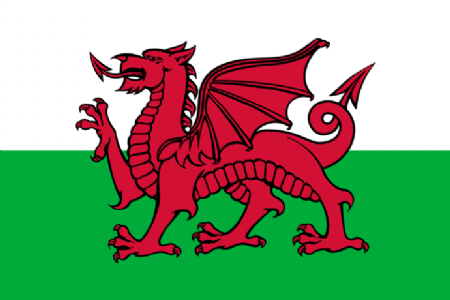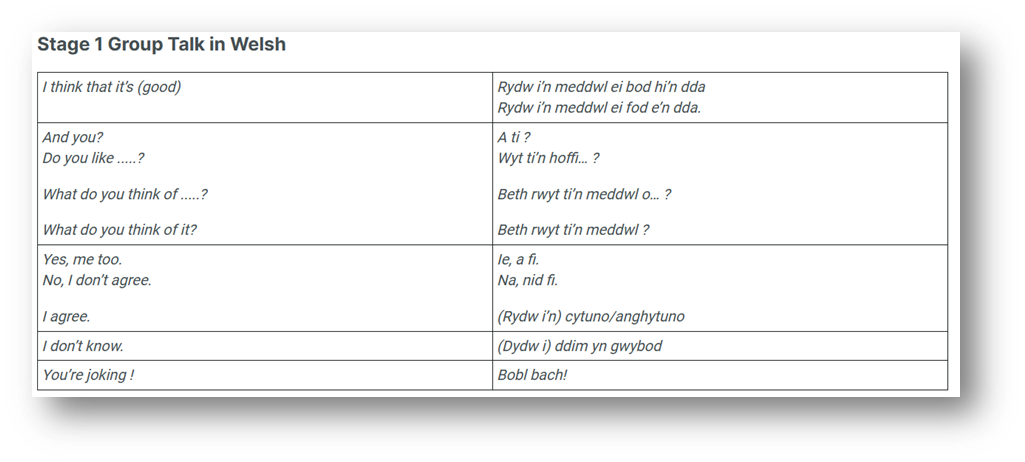Sanako UK launches new Connect resources in Welsh!
 One of the fantastic things about Sanako Connect is how easy it is to create bespoke resources in (almost) any language. This means that minority languages, for which it’s often not cost-effective for publisher to create resources, can have very professional-looking resources created simply and easily, which can use all the brilliant features of Sanako Connect software (conducting simultaneous speaking assessments, pupils receiving feedback on their pronunciation either from the computer of the teacher, automatically marked listening activities).
One of the fantastic things about Sanako Connect is how easy it is to create bespoke resources in (almost) any language. This means that minority languages, for which it’s often not cost-effective for publisher to create resources, can have very professional-looking resources created simply and easily, which can use all the brilliant features of Sanako Connect software (conducting simultaneous speaking assessments, pupils receiving feedback on their pronunciation either from the computer of the teacher, automatically marked listening activities).
See my blog posts here and here for more about this. The new ‘Pronounce’ feature where students listen to a word, phrase or sentence and then pronounce it and get feedback on it will soon be available in Welsh. Below is an example of it in French to give you a taste of it:
/i/video/Blog_Post_1.mp4
I have recently been creating some resources in Welsh, and I started with a Welsh Group Talk aural mat, using the fantastic method that Greg Horton developed around 15 years ago, which won a European Award for Languages, and has stood the test of time in helping students to enjoy speaking a foreign language (see this short programme from Teachers TV if you want to know more about it). With the help of Erin, who leads Welsh at Monmouth Comprehensive School and who recorded the utterances at each of the four Group Talk stages in Welsh, we now have a resource that can be used and shared with other schools that use Connect.

Welsh as a second language GCSE
Welsh as a second language GCSE particularly lends itself to Group Talk, as one of the activities in the speaking exam is to watch a short video clip and then to conduct a conversation with a partner or group (with 10 minutes to prepare it),
You have 10 minutes to prepare this conversation with your partner/group. During the 10 minutes you will:
- watch the clip twice
- make notes on the preparation sheet.
You will take the preparation sheet into the examination room. During the conversation you should:
- show you have understood the content of the clip
- talk about the subjects discussed in the clip with your partner/group.
Remember to use the preparation sheet to:
- make notes
- express opinion
- agree/disagree
- extend and develop your conversation on one or more of the subjects
I love the format of this part of the exam, as it mirrors what happens in real life. Video clips which are used as a stimulus can be also be added to the exercise, and students can be assigned to groups by the teacher. They can plan together, then their conversation can be recorded and saved by the teacher, who can later listen to it and provide written or oral feedback on it and return it to the students.

You can record feedback linked to each separate utterance by right clicking on the red section of each utterance. A box like the one below will appear:
You can either type in your feedback or record it by clicking on the red microphone icon to the right. A speech bubble will appear to show that you have provided some feedback and when it is returned to the student, they should click on the speech bubble to either read or listen to your feedback.
The North Wales Consortium of schools
The North Wales Consortium of schools, led by Stéphanie Ellis-Williams, are in the process of deploying a large number of Sanako Connect licences for several schools (if you can buy these as a consortium or Multi-Academy Trust there are great savings to be made). As well as using these for MFL teaching, we hope that the Welsh departments in their schools will make full use of Connect and we will be able to support them in creating resources in Welsh and sharing them with other schools.
I can see so many opportunities for minority and home languages here. We are also looking at an Irish Gaelic project soon, along similar lines to Welsh.
National Centre for Languages Education (NCLE)
As was announced on 3 March, the IoE will establish a National Centre for Languages Education (NCLE) made up of up to 25 lead schools specialising in languages to work with up to 105 partner secondary schools. As well as aiming to develop strategies to persuade more boys, pupils with SEND and other disadvantaged pupils, to choose languages, up to five schools will be chosen to expand the Home Languages Accreditation project, which helps bilingual pupils gain GCSEs or A-levels in their home or heritage language.
It is exciting to think that Sanako Connect will be able to support more learners to improve in their home language, as it so easy to create resources for almost any language. Irish Gaelic will be coming soon, but suggestions for resources in any other languages are welcome!




